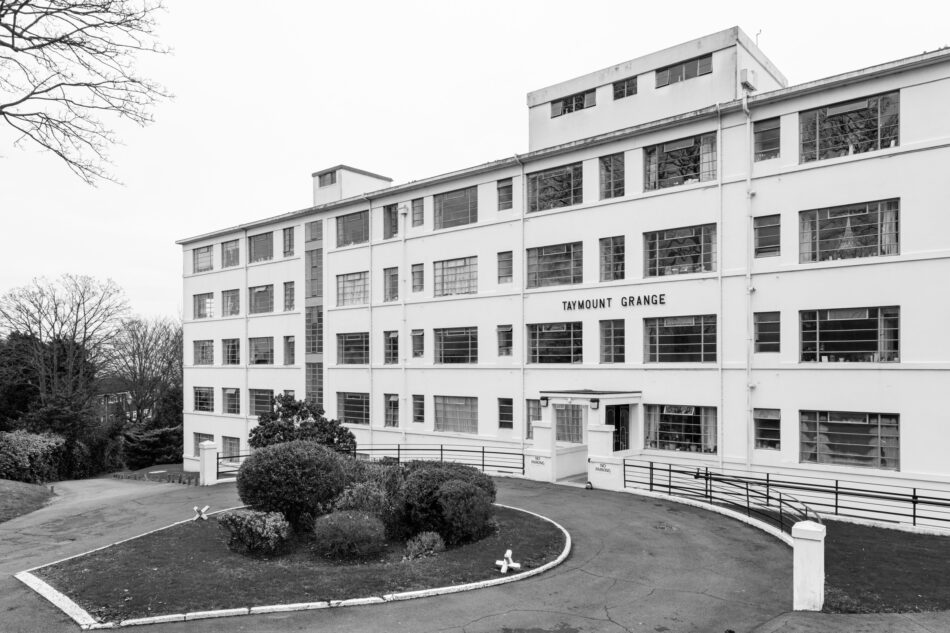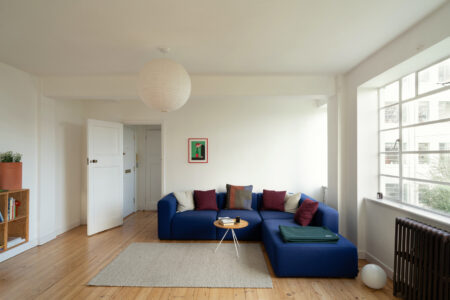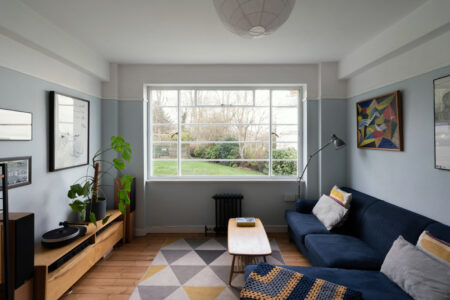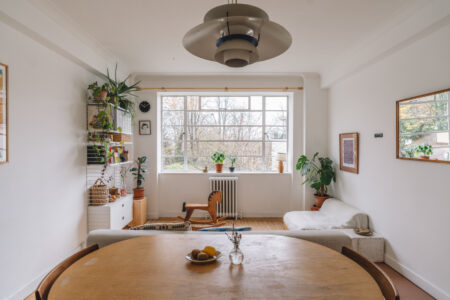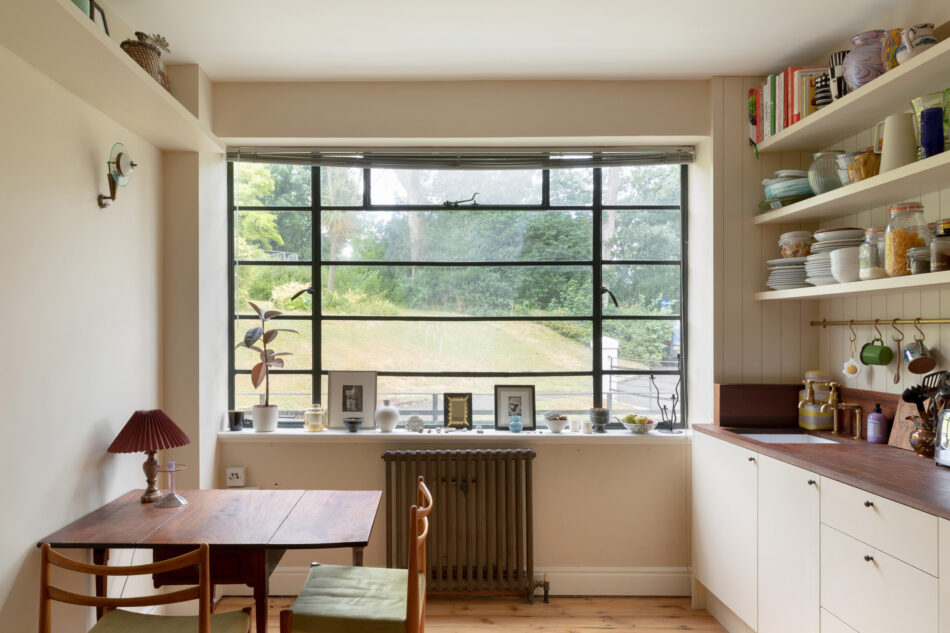
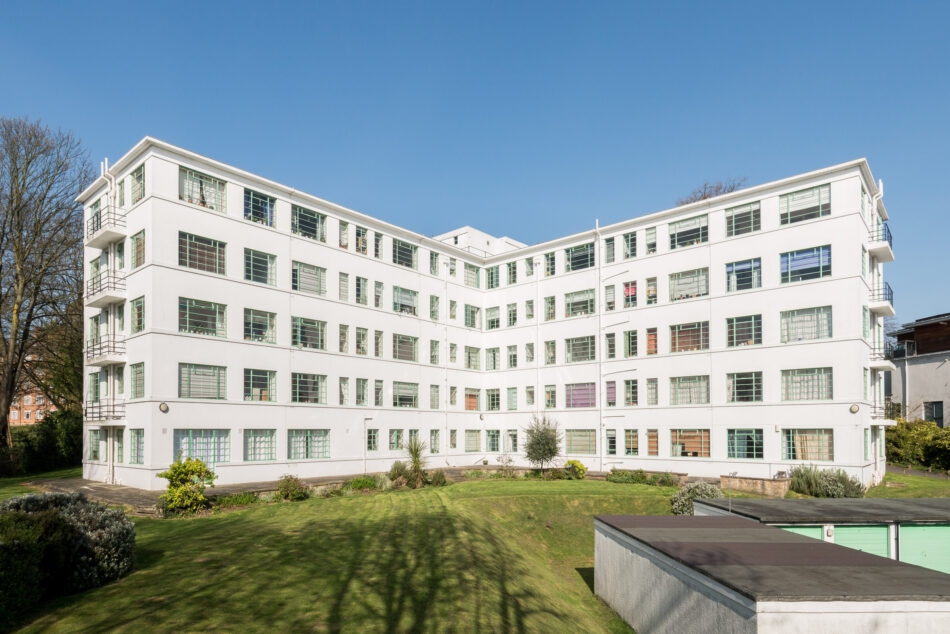
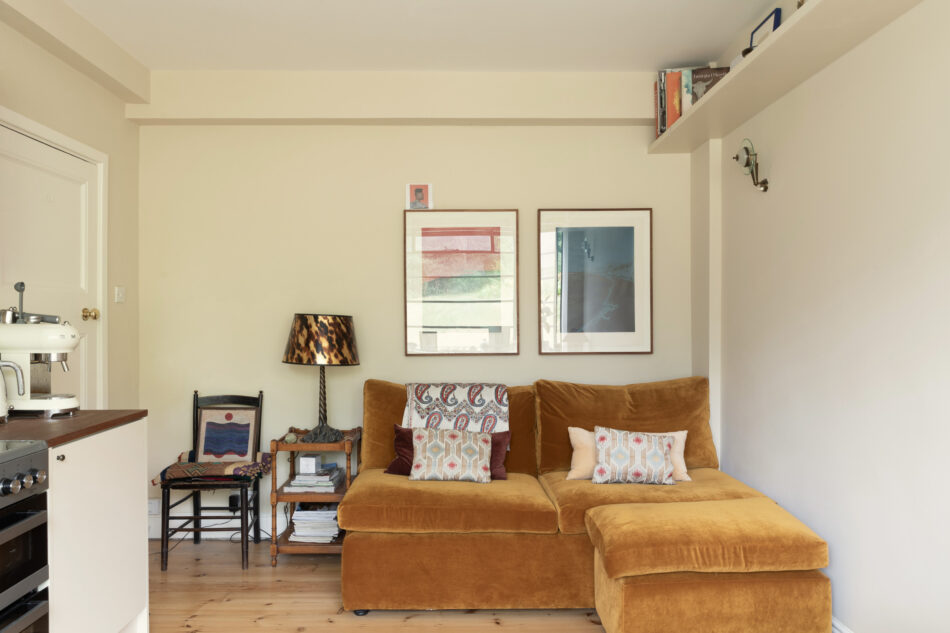
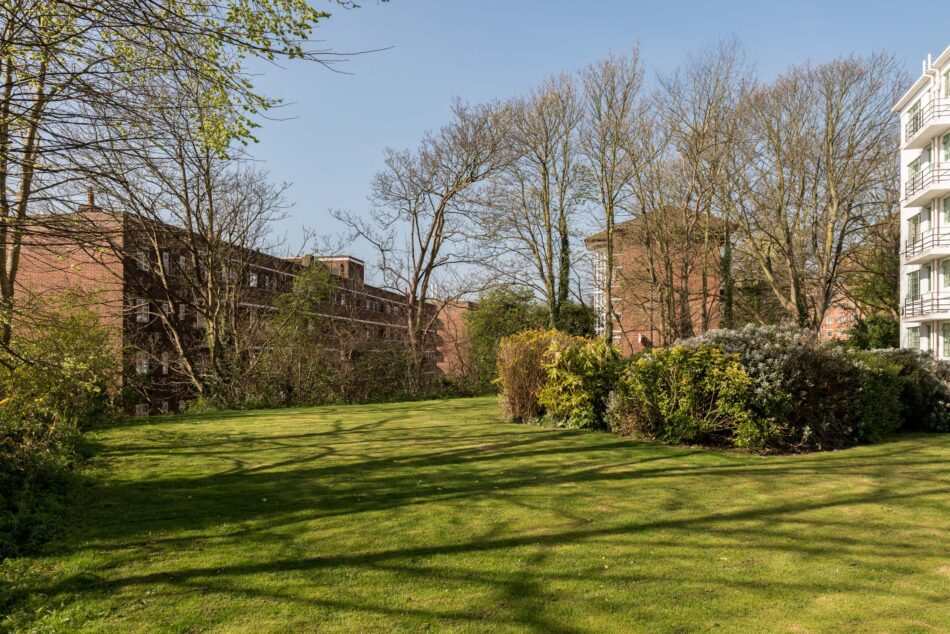
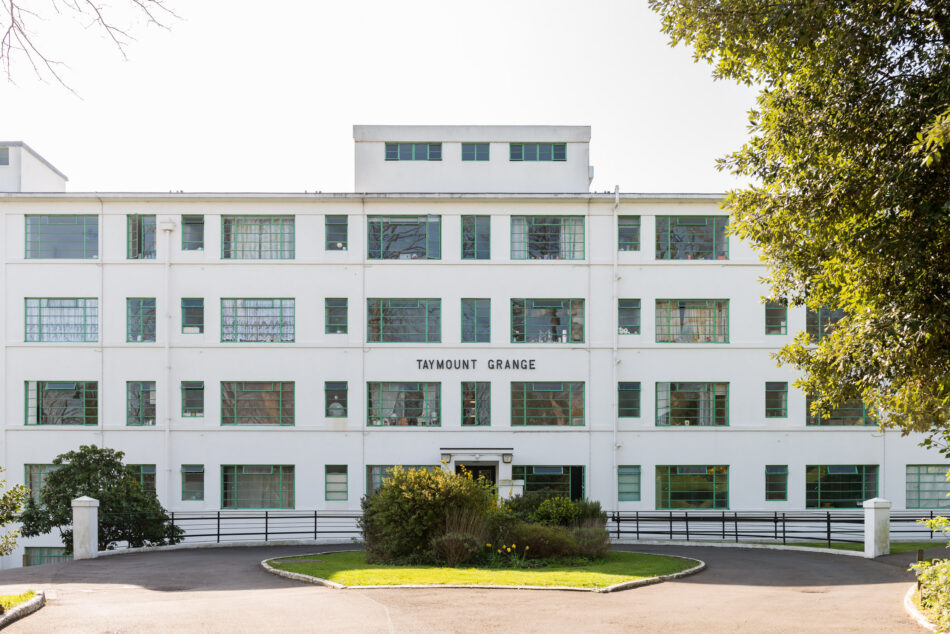















Taymount Grange XIII
Taymount Rise, London SE23
Architect: G. Bertram Carter
Request viewingRegister for similar homes“Large Crittall windows draw in a wealth of light”
This characterful one-bedroom apartment is on the raised ground floor of the little-known 1930s gem Taymount Grange. The subject of a recent renovation by its current owner, the apartment has been sensitively updated to retain its period character while simultaneously incorporating an injection of contemporary colour and bespoke design. The estate is surrounded by extensive communal gardens, which contain allotments and wide lawns. The building lies at the centre of Forest Hill, with its leafy woodland walks and many lovely cafés.
The Building
Designed by George Bertram Carter, Taymount Grange is instantly recognisable by its white-painted stucco punctuated by the striking mint-coloured Crittall windows. Its communal areas are in very good condition and still retain many original art moderne features. Smart lifts and richly carpeted stairwells hint at the glamour of the building’s early life, when a restaurant and lounge occupied the lower floors. The apartment has an intercom system for access, a caretaker and plenty of bike storage. For more information, please see the History section below.
The Tour
The apartment is nestled among the beautifully tended lawns of the estate. Entry to the apartment is on the ground floor, opening into a hallway lined with stylish wallpaper by Pierre Frey.
Off the hallway is a bright living room and kitchen, where a large Crittall window faces out into the communal gardens. The window frame has been thoughtfully painted in ‘Studio Green’ by Farrow and Ball, echoing the verdant backdrop beyond and creating a feeling of calm. The kitchen neatly lines one wall, where units have been topped with the rich grain of reclaimed Iroko wood that chimes with brass taps and a hanging rail by Devol. ‘Matchstick’ by Farrow and Ball is used across the walls, on the tongue-and-groove panelling and cabinetry to establish a cohesive and polished finish. A bespoke unit has also been incorporated into the kitchen’s design and mirrors the deep green of the window frame. Original cast-iron radiators have been refurbished throughout.
The bedroom is located at the rear of the plan and feels peaceful. It is painted in ‘Cotta’, an environmentally friendly paint by Atelier Ellis, in keeping with the rest of the apartment’s colour palette. Bespoke cabinetry frames the bed providing plenty of storage. As with the living room, a large Crittall window overlooks the leafy backdrop and allows light to pour in.
Between the bedroom and living area sits an elegant bathroom. A bespoke washstand has been fashioned from ‘Rosso Levanto’ marble from Lapicida. The deep hues of the material are echoed across the striking crimson tones found in this room, and tongue and groove panelling adds a textural element to the design. The bath has been fitted with a roomy waterfall shower, and the tiles have been carefully arranged to mimic the building’s original design. Storage has been thoughtfully maximised across shelving and recessed nooks for toiletries. Cork flooring runs underfoot.
Outdoor Space
All residents of Taymount Grange can use the wonderful communal gardens to the front and rear of the building. These tranquil and verdant spaces include a shared barbecue area and established allotments with a variety of fruit trees.
The Area
Taymount Grange is located close to the Horniman Museum and Gardens. It is well-placed for the shops and restaurants of Dulwich Village and East Dulwich, as well as the open spaces of Sydenham Woods and Dulwich Park. Local highlights include Bona, Pantry, and Aga’s Little Deli.
All of the amenities of Forest Hill, including the railway station, are approximately five minutes away on foot. Regular trains run from Forest Hill to London Bridge, with a journey time of 12 minutes. The station is also now part of the London Overground, with trains to Dalston via Canada Water (Jubilee Line), Shadwell (DLR), Shoreditch High Street and Whitechapel (Elizabeth, District and Hammersmith & City Lines).
Tenure: Leasehold
Lease Length: Approx. 141 years remaining
Service Charge: Approx. £2,250 per annum
Ground Rent: Peppercorn
Council Tax Band: B
Please note that all areas, measurements and distances given in these particulars are approximate and rounded. The text, photographs and floor plans are for general guidance only. The Modern House has not tested any services, appliances or specific fittings — prospective purchasers are advised to inspect the property themselves. All fixtures, fittings and furniture not specifically itemised within these particulars are deemed removable by the vendor.




History
Taymount Grange was built in 1935 to designs by English architect George Bertram Carter. Carter had studied at Blackheath School of Art between 1911 and 1915 before joining the Royal School of Art. He worked at Edwin Lutyens’ office as a student before setting up his own practice in Clifford’s Inn in 1929. Prior to Taymount Grange, Carter was responsible for two large factory designs in Tottenham and Whitechapel respectively. Carter designed both Taymount Grange and Lichfield Court (now Grade II-listed) in Richmond in 1935.
Taymount Grange sits at the top of Taymount Rise in Forest Hill, on the previous sites of Taymount, a 19th-century house, and Queens Tennis Club. It embodies the ‘style moderne’ aesthetic that stemmed from the art deco movement during the 1930s. Unlike art deco, style moderne – also known as ‘streamline moderne’ or ‘ocean liner style’ – prioritised clean shapes, long horizontal forms, and a lack of ornamentation.
In his thesis, The Servant Problem Solved: Modernist 1930s Residential Blocks, Damian Minto describes the history of Taymount Grange:
“[It] is built on the site of the original Queens tennis club. An important similarity with many modernist schemes was the fact that the existing earlier building (often a detached villa) was to be demolished to make way for the new block of flats. The site’s natural contours made it an ideal location for panoramic views of the London docks and rural edges of suburbia, a feature of which the flats take full advantage. The aimed new tenants were the middle classes – an important similarity with all modernist British residential schemes.
“Facilities available for residents included guestrooms, lounge, restaurant, terrace, landscaped gardens, swimming pool, seven tennis courts and a putting green. Taymount Grange was also fully staffed with everyone from porters to domestic help.”
From the expanses of white-painted stucco to the handsome metal windows and chrome-handled entrance doors, Taymount Grange has retained the unmistakably Thirties details that give it a romantic Modernist appeal.
